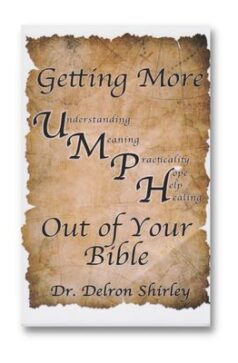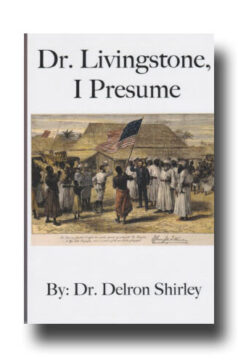Before our influence successfully laps into further circles of society, our first attention must be given to our primary circle of influence — ourselves. One way that many of us have determined to control our personal influence is to ask ourselves that ever-challenging question, “What would Jesus do in this situation?”
Several years ago, this approach to life became very popularized when Janie Tinkleberg, assisted by an advertising executive in her church, developed and distributed “WWJD” bracelets to teens in her youth group. Religious and secular marketers picked up on the idea, and millions of the bracelets were sold around the world. Before long, even Buddhists are jumping on the bandwagon with a book entitled, What Would Buddha Do?, offering Buddhism’s answers to more than a hundred daily dilemmas. What would Buddha do about coffee addiction? He’d switch to tea. How would Buddha deal with road rage? He’d steer away from anger. Bryce Willet, the book’s marketer commented that a person need not be a Buddhist to appreciate the book, “Americans feel free to look for spiritual wisdom in many different traditions. They use different spiritual practices they find meaningful.” In like fashion, Tinkleberg soon came to realize that people really didn’t need to know Christ to become engulfed in the WWJD movement. When the movement began to lose its steam, she noted that she felt that it was a good thing, “I want this to fade so it will end up where it belongs — back with people wearing them who know what these little nylon bracelets really mean.”
The problem with asking ourselves what Jesus would do in any situation is that the answers will come from a faulty source — ourselves. We can only answer the questions to the level at which we actually know Jesus. If we don’t know Him very well, we humans seem to have a tendency to recreate God at will — a truth that really hits home every Easter season when we see mention in the secular magazines of a panel of scholars known as the Jesus Seminar. These academics have spent the last many years analyzing the gospels and sorting the sayings of Jesus into four groups: words to be printed in red because they are the actual words He spoke, words to be printed in pink because they possibly came from the actual lips of Jesus, words to be printed in gray because it is unlikely that Jesus actually said them, and words to be printed in black because it is the evaluation of the panel that the gospel writers penned these words and attributed them to the Lord.
It reminds me of the “quest for the historical Jesus” movement of a number of years ago. The thesis of this series of studies by some of the leading theologians of the time was the idea that each of the gospel writers portrayed Jesus as he remembered Him. If this were the case, then none of the gospels would be the true picture of Jesus; to truly know Him, we would have to look behind the gospels to find the historical figure who inspired each of the diverse writers. Using higher criticism, lower criticism, and every other technique of analysis available, these men independently came to their own conclusions as to who this man from Nazareth must have been. The results were as varied as the scholars who authored the various books. You see, the problem is that on the sixth day of the creation week God created man in His image but ever since then man has been trying to invent God in his image. One scholar with a questionable sexual orientation came up with a homosexual Jesus. One scholar came to the conclusion that there never really was an historical Jesus at all. This conclusion made me wonder if there ever was an actual “scholar” at all. I thought of the vineyard keepers in a parable that Jesus told who wanted to kill the heir so that they could take the inheritance. (Matthew 21:38) Then I concluded that these supposed scholars wanted to “kill” Jesus so they could take more than a physical inheritance — they wanted to take the very position of God. Finally, Dr. Albert Schweitzer tried to lay the whole issue of the quest for the historical Jesus to rest with his summation that he found the true Jesus not on the shores of the Galilee, but on the banks of the Congo where He had commissioned the good doctor to serve hurting humanity.
Although the WWJD idea is an extremely noble concept, it collapses upon itself if we make up the Jesus that best suits our own liking. Perhaps my feelings about the WWJD slogan were best summed up in a little Family Circus cartoon where one of the children was considering taking the last piece of cake while his siblings stood by with none. The mother admonished the boy to consider what Jesus would do. Of course, she was hoping to invoke a spirit of sharing; but she was caught off guard by his reply that Jesus would multiply the cake so that it would feed everyone!
As I read through the gospels, I am continually confronted with a Jesus who, just as He did for the boy in the cartoon, reacts quite differently from the way I expect Him to. For instance, the biblical Jesus walked into a situation where a group of His disciples had failed in their attempt to deliver a young boy who was tormented by demons. The Jesus I like to envision would have gently encouraged His followers, “It’s okay. I know that you tried your best. Let Me help you out this time and give you a couple pointers so that you can take care of the next one on your own.” Instead, He really got on their case; He read them the riot act, calling them a faithless and perverse generation! In other words, He was “on them like white is on rice.” This wasn’t the only time He treated His friends like this; careful reading of the scriptures reveals that He often upbraided them when we would have thought that He would have instructed or encouraged them. He even called Peter “Satan” when the disciple was doing what seemed to be the most noble thing possible by promising to die for his master. Even Jesus’ own mother got a surprising retort when she asked Him to help out an embarrassed young couple who had run out of wine at their wedding reception. When a desperate mother begged Him to help her demon-possessed daughter, this man — whom we expect to be such a loving Lord — responded with an insulting insinuation suggesting that she was a dog. He seemingly abandoned His closest friend by “dilly dallying” around for two days rather than responding immediately when Lazarus’ sisters sent Him a message that their terminally ill brother was in a life-threatening condition. How could this healer with the power to cure everyone walk past a multitude at the Pool of Bethesda and single out only one man to restore to health? Even though He was the one who taught us to love our enemies, He bolted into their garage sale, stared them straight in the face, and yelled, “Hypocrites!” Then He proceeded to turn over their tables and took a whip to them! I would have thought that He would have prayed for them, loved them, and offered them the other cheek after their offenses. Possibly even more puzzling is the question of why this Savior had to spend three hours in the Garden of Gethsemane praying that the cup would pass from Him before He finally yielded His will to the will of the Father and submitted to the cross.
Is there a problem with WWJD? No — a million times, no! This is the absolute command of the scriptures. Paul told us to be imitators of him just as he was a copycat of Christ. “Be ye followers of me, even as I also am of Christ.” (I Corinthians 11:1) I personally believe that we should all live, just as the little community depicted in In His Steps did, with a constant image of Jesus before our mind’s eye. The only problem is that we all too often jump to our own conclusions as to what that image of Jesus should be. All too soon, we paint our picture and then try to clone it into our own lives.
We can listen to one radio program about the penniless Jesus who had no place to lay His head; then, with just a click of the dial, we can be confronted with a Jesus who had so much money that He had to have a full-time treasurer who had a regular habit of embezzling from the kitty. Obviously there must have been plenty in the till for the thief to have been able to go for such a long time without being detected. Immediately, we can chart two different courses for our lives — two courses which will take us to two totally different destinations: wealth or poverty. Which one is right? Or is either one right? I guess that we could say with the old Certs commercial, “You’re both right. It’s two, two, two mints in one. Certs is a candy mint, and it is a breath mint.” But on the other hand, I think that we could just as accurately say that both conclusions are wrong — not wrong in their conclusion, but wrong in how they were derived. If we go to the scriptures with our minds already picturing the Jesus who satisfies us, we will never see the true Jesus of history. Those who feel comfortable with an impoverished Jesus will never allow themselves to be impacted by the passages that show that He had control of worldly goods. On the flip side of the coin, those who find their own personal security in possessions will not willingly hear the message of a poor Jesus.
Maybe we can learn something from Dr. Schweitzer, that great theologian who gave up his prestigious professorship to serve in the forgotten hinterlands of Africa. I think that in him we see the reality that a life impacted by the present-day Christ is the only life that has really understood the Jesus of history. On the other hand, only a life that has been impacted by the historical Jesus can fully understand the present-day Christ. In other words, we must learn to study the scriptures through the eyes of revelation of the Holy Spirit rather than the glasses handed us by society. Once we have seen the master as His disciples and the apostles presented Him to us, we must determine to let Him — not the Jesus of someone’s creation — direct us in our daily lives. In case you missed it, there were two key words in the last couple sentences: “Holy Spirit” and “society.” My point is that we will never academically know Jesus. After all, it was Jesus Himself who told us that the Holy Spirit’s work was to reveal Jesus to us and that the world could not receive the Holy Spirit.
Howbeit when he, the Spirit of truth, is come, he will guide you into all truth: for he shall not speak of himself; but whatsoever he shall hear, that shall he speak: and he will shew you things to come. He shall glorify me: for he shall receive of mine, and shall shew it unto you. All things that the Father hath are mine: therefore said I, that he shall take of mine, and shall shew it unto you. (John 16:13-15)
In the born-again believer, the Third Member of the Holy Trinity sets about to give revelation of the Son of God. We cannot rely on “society” — no matter who that may be: a great theologian, a pastor, or our own notions about the matter — to shape our opinion of who Jesus was and is. The great passage of Jesus’ revelation of Himself to His disciples who had already spent many months with Him proves that unless there is a divine revelation, we can be in the very presence of Jesus and still not see Him.
When Jesus came into the coasts of Caesarea Philippi, he asked his disciples, saying, Whom do men say that I the Son of man am? And they said, Some say that thou art John the Baptist: some, Elias; and others, Jeremias, or one of the prophets. He saith unto them, But whom say ye that I am? And Simon Peter answered and said, Thou art the Christ, the Son of the living God. And Jesus answered and said unto him, Blessed art thou, Simon Barjona: for flesh and blood hath not revealed it unto thee, but my Father which is in heaven. (Matthew 16:13-17)
Even after that supernatural disclosure, the disciples still found themselves failing to recognize Jesus when He walked with them on the evening of His resurrection.
And, behold, two of them went that same day to a village called Emmaus, which was from Jerusalem about threescore furlongs. And they talked together of all these things which had happened. And it came to pass, that, while they communed together and reasoned, Jesus himself drew near, and went with them. But their eyes were holden that they should not know him. And he said unto them, What manner of communications are these that ye have one to another, as ye walk, and are sad? And the one of them, whose name was Cleopas, answering said unto him, Art thou only a stranger in Jerusalem, and hast not known the things which are come to pass there in these days? And he said unto them, What things? And they said unto him, Concerning Jesus of Nazareth, which was a prophet mighty in deed and word before God and all the people: And how the chief priests and our rulers delivered him to be condemned to death, and have crucified him. But we trusted that it had been he which should have redeemed Israel: and beside all this, to day is the third day since these things were done. Yea, and certain women also of our company made us astonished, which were early at the sepulchre; And when they found not his body, they came, saying, that they had also seen a vision of angels, which said that he was alive. And certain of them which were with us went to the sepulchre, and found it even so as the women had said: but him they saw not. Then he said unto them, O fools, and slow of heart to believe all that the prophets have spoken: Ought not Christ to have suffered these things, and to enter into his glory? And beginning at Moses and all the prophets, he expounded unto them in all the scriptures the things concerning himself. And they drew nigh unto the village, whither they went: and he made as though he would have gone further. But they constrained him, saying, Abide with us: for it is toward evening, and the day is far spent. And he went in to tarry with them. And it came to pass, as he sat at meat with them, he took bread, and blessed it, and brake, and gave to them. And their eyes were opened, and they knew him; and he vanished out of their sight. And they said one to another, Did not our heart burn within us, while he talked with us by the way, and while he opened to us the scriptures? (Luke 24:13-32)
Even Mary Magdalene, one of His closest friends, had a case of mistaken identity.
But Mary stood without at the sepulchre weeping: and as she wept, she stooped down, and looked into the sepulchre, And seeth two angels in white sitting, the one at the head, and the other at the feet, where the body of Jesus had lain. And they say unto her, Woman, why weepest thou? She saith unto them, Because they have taken away my Lord, and I know not where they have laid him. And when she had thus said, she turned herself back, and saw Jesus standing, and knew not that it was Jesus. Jesus saith unto her, Woman, why weepest thou? whom seekest thou? She, supposing him to be the gardener, saith unto him, Sir, if thou have borne him hence, tell me where thou hast laid him, and I will take him away. Jesus saith unto her, Mary. She turned herself, and saith unto him, Rabboni; which is to say, Master. (John 20:11-16)
It is only through Holy Spirit-inspired, honest, and unbiased study of the scripture and application of the scriptures to our own lives that we will ever truly know what Jesus would do. At that point, it will not be so much a matter of our trying to imitate Christ; rather, it will be that He is so alive inside us that He will simply be living through us. We could paraphrase how Paul expressed this truth by saying, “It’s not that I have come to know him, but that He has gotten hold of me!” (Philippians 3:12) In Galatians 2:20. he said that the result of this apprehension was that he no longer lived, but that his very life was Christ’s life being manifest through him.
It is at this point that we truly begin to be men of peculiar influence who are doing what Jesus would do and set in motion ripples that cascade through these perilous times in which we live!










